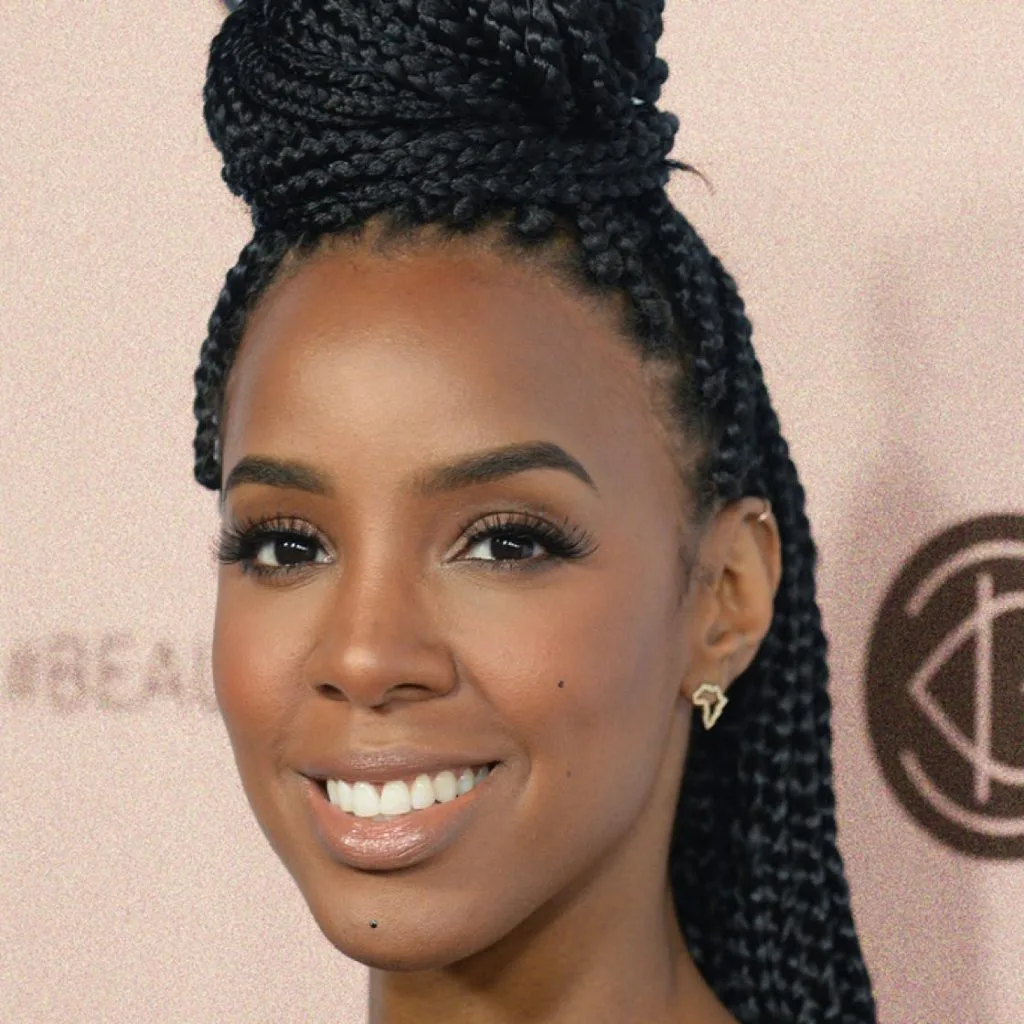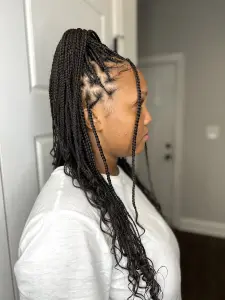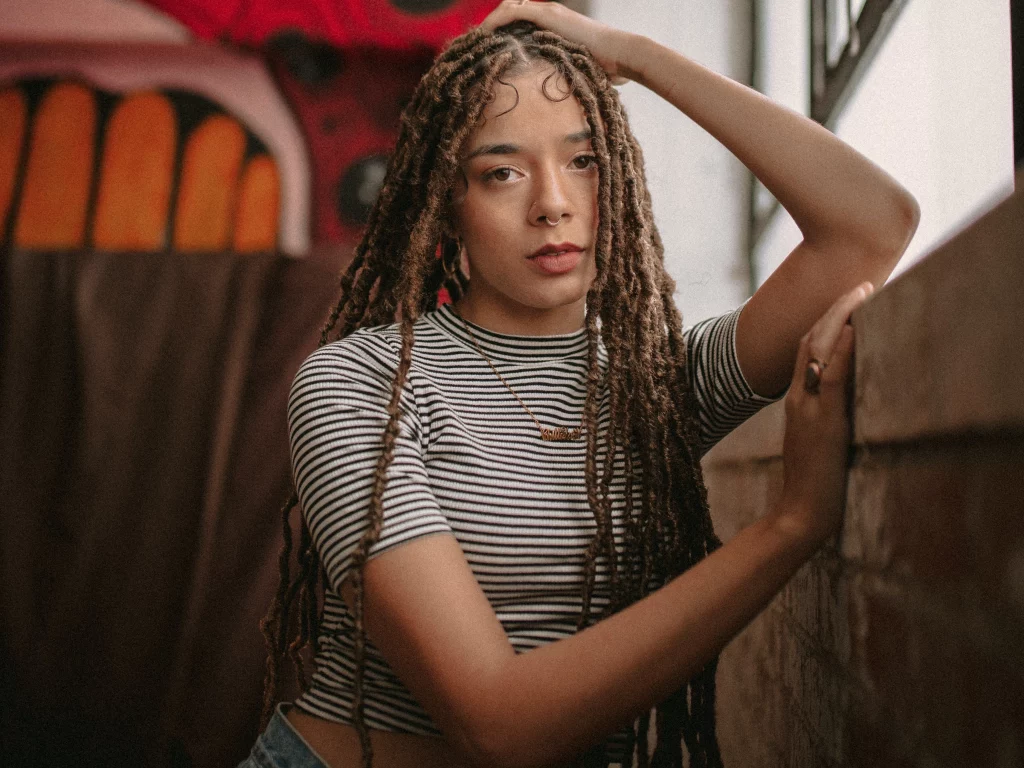
Some of us reading this are going to realize that your scalp is sensitive to Kanekalon braiding hair or Marley synthetic hair, which might be used to do Faux Locs, Invisible Locs, or many other hairstyles done with Marley hair. While there are other reasons concerning why the scalp itches, it is important to be aware of the common causes of why your braids cause your scalp to itch. Keep in mind that everyone’s scalp is different and the level of scalp irritation varies from person to person.
Fix your dry scalp before doing a protective hairstyle
I’m not talking about scalp psoriasis! Some of us are concerned about getting our hair styled and looking “presentable”. Maintaining the longevity of the health of your natural hair weighs more, especially if you’re like me and love getting your hair into a protective style. A dry scalp inevitably leads to dandruff. If you are having dry scalp and dandruff, ask yourself about the last time you shampooed your hair with a really good clarifying shampoo or when you last got a soothing scalp treatment. There are times when both are needed or when you might need to do one over the other to combat your dry scalp. If you are not sure of how often you should clarify your hair with a clarifying shampoo, be sure to check out this article. I try my best to do this before I ever think of styling my hair.
Buy quality products for braids, faux locs, invisible locs
If you already have braids or Faux Locs in right now and your scalp is dry with dandruff, you want to try using a dry shampoo with great reviews to cleanse your scalp, followed by a light leave-in conditioner, and most importantly, an essential oil and carrier oil mixture to fight off the bacteria causing itchiness. In this case, I recommend either a great essential oil, like Tea Tree oil, or Peppermint oil, and mixing a ratio of 1 teaspoon of your essential oil to 1 tablespoon of a carrier oil, like Jojoba oil, Grapeseed oil, Hempseed oil, or Amla oil, just to name a few. You can get super creative with buying them all and creating your own mixture! You want to use the dry shampoo and condition your scalp while wearing braids as often as bi-weekly or as needed. The oil mixture after every wash routine is a given task. Only do not make this an everyday procedure. You will only do more damage than good doing that. Personally, I try to oil my scalp every 2-4 days, so around this time frame is not bad.
Having dry scalp from itchy braids could be an allergic reaction
One thing to never forget is that your braiding hair is synthetic. If I could write that a hundred times, I will. Some of us might be allergic to a certain brand or it could be a bad batch of that brand’s braiding hair. If you start to experience uncontrollable rash, followed by red bumps, and then flakiness from itching then you need to remove your braids pronto. It is simply unhealthy and it is likely the braiding hair used was either not thoroughly washed with Apple Cider Vinegar beforehand or the braiding hair was not a good brand or the braiding hair came out of a bad batch. It is tough to say because it all depends on how often you use that brand of braiding hair and if it is your first time getting your hair styled. If you either don’t get braids often or if it is your first time, I advise using braiding hair that is itch-free. Typically, braiding hair is manufactured with alkaline used as a preservative. The fibers for braiding hair are not what causes irritation, but the alkaline, which is really meant for fighting off the bacterial growth on braiding hair. If you cannot find itch-free braiding hair, you can wash it with an apple cider vinegar rinse and rub a quarter size of your essential and carrier oil mixture through the fibers before installing your braids. This method can be applied to the synthetic hair used for faux locs and invisible locs.
Too much tension is just bad for your hair

I grew up for the first decade of my life in Nigeria, so I have had some experience of the struggle with hair stylists braiding way too tight! Even when I came to the U.S., I would still encounter many stylists that would just pull on the tender areas of my head. I think sometimes, we think that is part of the process. To a great extent, it is just not! Always remember, braids and faux locs are a protective style, not a battle-of-the-headaches time. Now, this topic can easily go sideways because I have encountered 85% of clients who tell me that I do not braid tight at all. The rest are simply tender-headed. I know this because I do my best to be careful to not do the major pulling that leads to breakage and sore scalp. If your stylist is yanking on your hair or if you are the one yanking and not combing your hair properly before doing a protective hairstyle, you are doing more damage than good to your hair.
Your braids or faux locs might need extra TLC
We have to remember that we are wearing our protective hairstyles from anywhere between 6-12 weeks, give and take. Based on this, a lot of what was stated above focused on scalp to-do’s, which are awesome! That being said, let’s not forget to keep the actual braids or faux locs free of dirt. I like to go ahead and wash my braids on the same day I am washing my scalp just because it is more convenient that way. If you work out frequently or have an active lifestyle, you may have to increase the routine frequency.

Some people might get faux locs used with synthetic hair or braids with synthetic hair and it might not itch at all! If you have not gotten braids at all and are a first-timer, chances are, your scalp might get slightly irritated if the synthetic hair is not properly washed prior to installation. I trust this article helped you a bunch!

